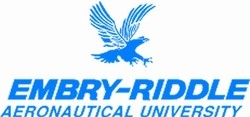Two-Stage Icarus Ascends Nearly 200,000 Feet
 Aero-News has learned a team
of Aerospace Engineering students from Embry-Riddle Aeronautical
University made history on March 22, when they successfully
launched their two-stage Icarus rocket from NASA Wallops Flight
Facility in Virginia.
Aero-News has learned a team
of Aerospace Engineering students from Embry-Riddle Aeronautical
University made history on March 22, when they successfully
launched their two-stage Icarus rocket from NASA Wallops Flight
Facility in Virginia.
With 3,500 pounds of thrust in the first stage and 900 pounds in
the second stage, the rocket set an altitude record for a
student-built vehicle -- 199,580 feet, or 37.8 miles -- and became
the first two-stage student sounding rocket to launch from a NASA
facility.
"The Embry-Riddle student-designed rocket was the most complex
student project we have supported to date," said Phil Eberspeaker,
chief of NASA's Sounding Rockets Program Office. "NASA subjects
these student rockets to the same scrutiny as a NASA sounding
rocket to ensure the flight can be conducted in a safe manner."
Embry-Riddle student Mike Stackpole founded Project Icarus in
2003 with assistance from other students in the Embry-Riddle Future
Space Explorers and Developers Society and has led the effort ever
since. Current team members are Jon Barnhart, Brandon Boekelman,
Josh Chatham, Jacklyn Duff, Curtis Ewbank, and Kevin Mock. Former
team members who made significant contributions are Ron Driggers,
Steven Trout, and Markus Zimmerman, all of whom have graduated in
the past year. The team's faculty advisors are Dr. Eric Hill and
Dr. Rick Perrell.
"The mission of Project Icarus is to promote student rocket
projects at Embry-Riddle, combining classroom knowledge with
hands-on experience in rocket design and construction," said
Stackpole. "Icarus is the first in what will hopefully be a long
line of vehicles, each pushing the envelope slightly more. The
eventual goal is to create a rocket that reaches space."
According to Stackpole, analysis of NASA radar and on-board
telemetry data showed that the Icarus rocket performed nearly
perfectly: The first stage blasted the rocket off the pad to reach
a velocity of Mach 2.5 at an acceleration of 13.2 g's; after the
first stage fell away, the sustainer reached Mach 4.04 and a height
of 37.8 miles.
The 16-foot-long rocket weighed 268 pounds fully loaded and
carried a 15-pound electronic payload, including a telemetry system
to relay information back to the ground via UHF radio signals. Data
was collected on barometric pressure, acceleration, spin rate, GPS,
altitude, and the temperature of the nose cone. The payload also
included a capacitor discharge initiation system that ignited the
second stage at a specified time during flight. The solid
propellant, similar to that used by the solid rocket boosters on
the space shuttles, was manufactured by Loki Research of
Pennsylvania.
"The Icarus team put in a sustained effort over the years, and
the importance of their achievement can't be overstated," said Dr.
Perrell. "One of the many impressive aspects of this project is how
efficiently the students used the monetary contributions they
received in support of their work. The Icarus experience will stand
them in good stead as they graduate into the real world of the
aviation and aerospace industry."
 The students raised a
total of $17,500 from funding sources that included United Space
Alliance and two Embry-Riddle sources, the College of Engineering
Director of Graduate Programs plus a Provost's Undergraduate
Research Grant titled "Project Icarus: Developing an Inexpensive
Sounding Rocket for Space Research Payloads." The funding was
applied to the complete Icarus program, including ground support,
workshop tools, equipment, and transportation.
The students raised a
total of $17,500 from funding sources that included United Space
Alliance and two Embry-Riddle sources, the College of Engineering
Director of Graduate Programs plus a Provost's Undergraduate
Research Grant titled "Project Icarus: Developing an Inexpensive
Sounding Rocket for Space Research Payloads." The funding was
applied to the complete Icarus program, including ground support,
workshop tools, equipment, and transportation.
In addition, the team received significant outside assistance,
including material and labor donations from Florida Institute of
Technology (FIT). Others who helped are high-powered rocket
experimentalists Greg Peeples of FIT and Chris Holland of United
Space Alliance; Jeff Taylor and Darren Wright of Loki Research;
Erik Hall of Ozark Aerospace; and many individuals at NASA Wallops
Flight Facility, particularly the team's project manager, Dave
Moltedo.
 ANN's Daily Aero-Linx (04.16.24)
ANN's Daily Aero-Linx (04.16.24) Aero-News: Quote of the Day (04.16.24)
Aero-News: Quote of the Day (04.16.24) Airborne 04.10.24: SnF24!, A50 Heritage Reveal, HeliCycle!, Montaer MC-01
Airborne 04.10.24: SnF24!, A50 Heritage Reveal, HeliCycle!, Montaer MC-01 Airborne 04.12.24: SnF24!, G100UL Is Here, Holy Micro, Plane Tags
Airborne 04.12.24: SnF24!, G100UL Is Here, Holy Micro, Plane Tags Airborne-Flight Training 04.17.24: Feds Need Controllers, Spirit Delay, Redbird
Airborne-Flight Training 04.17.24: Feds Need Controllers, Spirit Delay, Redbird




